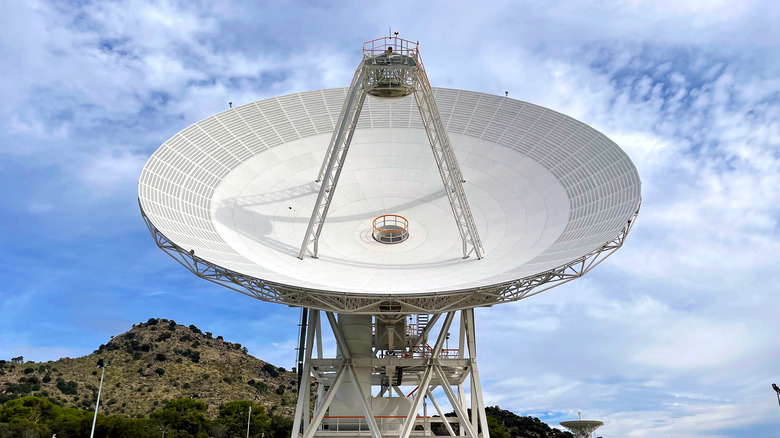NASA Is Getting A Huge New Dish For Its Deep Space Network
NASA communicates with space missions like its Mars rovers or even the distant Voyager spacecraft using a system called the Deep Space Network (DSN). This consists of giant dishes in three locations around the world: in Australia, Spain, and California. The locations are spaced apart around the globe to ensure that, even as the Earth rotates, a space mission will always be visible to at least one location.
These huge dishes receive signals from missions, such as scientific data they have collected, and in turn relay new commands to them.
However, there are more and more space missions being launched, and as technology develops these missions are collecting more and more data. NASA, in turn, needs a communication network which can handle higher bandwidths. That's why the agency is in the process of upgrading the Deep Space Network so it can use laser communications, which have up to 10 times the bandwidth of current radio communication systems (via NASA).
As part of this upgrade, NASA is adding six new "beam waveguide" antennas to the network, which allow easier maintenance of the system and which can back up the main antennas of each site (via JPL). One such antenna has just been debuted this week, on March 16 2022.
"This new antenna adds about 8% more capacity to the network. What it's going to mean is 8% more science, and that's really significant," said JPL's Bradford Arnold, the DSN project manager.
Inaugurating the new antenna
The new antenna is located outside Madrid, in the DSN's Spain location. The dish measures a massive 111 feet (34 meters) across and is named Deep Space Station 53, or DSS-53. The Deep Space Network overall is managed by NASA's Jet Propulsion Laboratory, but the site in Spain is managed by Spain's Instituto Nacional de Técnica Aeroespacial (National Institute of Aerospace Technology).
To celebrate the debut of the new antenna, King Felipe VI of Spain attended the inauguration ceremony (via JPL).
"NASA is honored and humbled to have the king acknowledge this important milestone by joining us at the Madrid station. His inauguration of the Deep Space Station 53 antenna highlights the critical and historical collaboration between the Kingdom of Spain and the United States that, through the Deep Space Network, will continue to enable humankind's exploration of the heavens for many years to come," said Badri A. Younes, deputy associate administrator for Space Communications and Navigation (SCaN) at NASA Headquarters in Washington.
Bringing the new antenna online took two years of careful work, including weeks of making tiny adjustments of the dish's 300 reflector panels to tune everything perfectly. With the fourth of six new antennas now online, the next antenna set to join the network is DSS-23, set to open in the California site in 2025.
